Catalogue > Faire une recherche
Résultats pour : Tout le catalogue
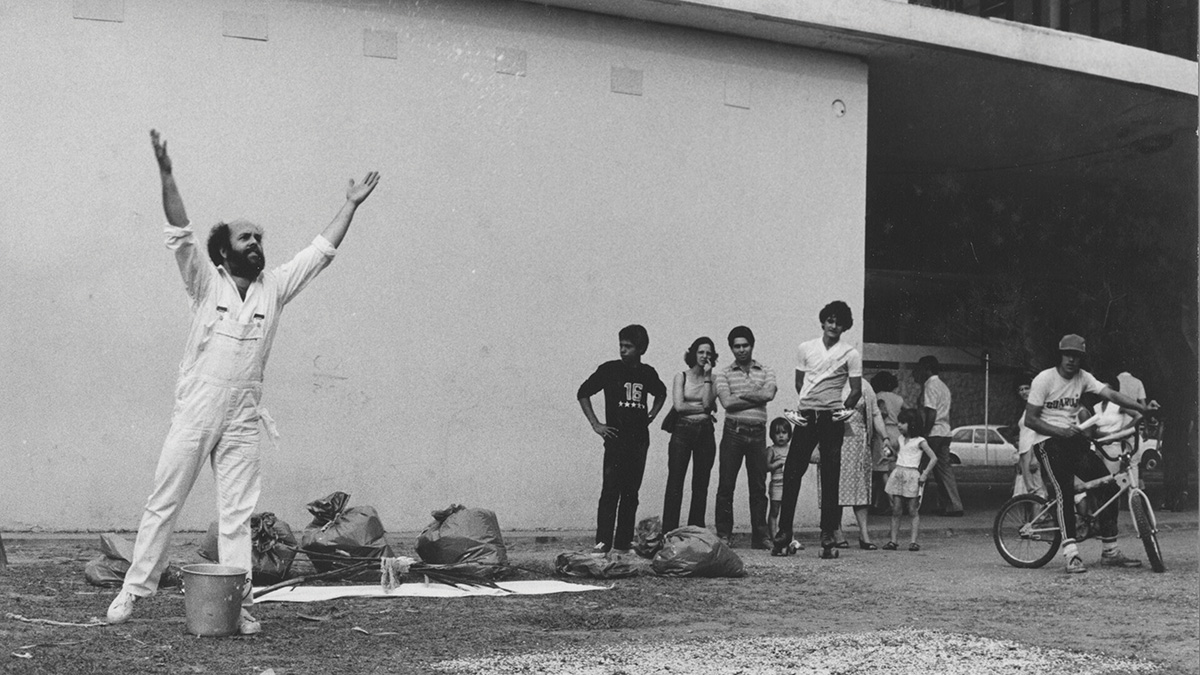

Luís Alves De Matos
A Casa de Dentro Carlos Nogueira
Documentaire | 0 | | 62:0 | Portugal | 2022
This documentary addresses the work of visual artist Carlos Nogueira – a multidisciplinary artist, and one of the leading contemporary Portuguese creators. It sheds light not only on his work, but also on his close relationship with his living and working space.
With a degree in filmmaking from the Escola Superior de Teatro e Cinema, Lisbon, since 1993, Lui?s Alves de Matos has collaborated in different contemporary creative projects. He then went on to make a number of documentary films about Portuguese artists. In 2001 he founded Amatar Filmes, continuing with the independent production and directing of documentaries in the field of art, as well as experimental films.
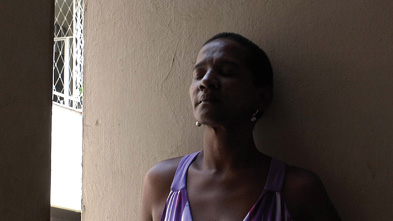
Ricardo Alves Jr
PERMANÊNCIAS
Doc. expérimental | hdcam | couleur | 34:0 | Brésil | 2010
A l?intérieur, l?air est plus dense.
Ricardo Alves Jr est né à Belo Horizonte, Brésil. Il est diplômé en tant que réalisateur de l?Universidad del Cine de Buenos Aires, Argentine. Son premier travail, le court métrage « Matériel Brute » reçoit plus de 10 récompenses dans plusieurs festivals internationaux. Il a aussi été sélectionné pour faire partie de « la zone visuelle » à la Biennale Visuelle Internationale d`art d?Israël et pour le festival VidéoBrésil. Son deuxième travail "Convite para jantar com camarada Stalin? (Invitation à dîner avec le camarade Stalin, 2007) a gagné le prix du meilleur court-métrage expérimental au Festival du Court-métrage International du Rio de Janeiro; le meilleur court-métrage, le meilleur directeur et le prix de la photographie du 40ème Festival de film de Brasilia, plus la mention spéciale « film de demain » au Festival International des Courts-métrages, à Belo Horizonte. Il a participé à plus de 30 festivals internationaux tels Oberhausen, Rotterdam, Karlovy Vary, Paris Cinéma, Munich et le Festival de film de Turin. En 2011 Ricardo réalise ses « Permanences » qui font partie de la sélection officielle à la Semaine de la Critique de Cannes.
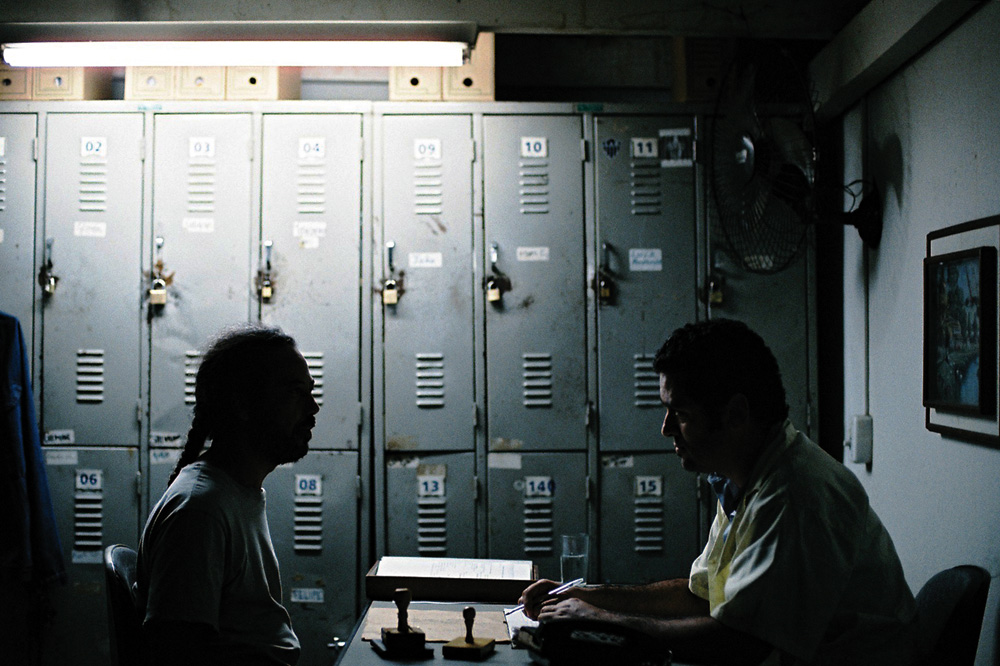
Ricardo Alves Jr, Ricardo Alves Jr
TREMOR
Fiction | 35mm | couleur | 14:0 | Brésil | 2013
One day in a man’s life. He is looking for his wife, he is looking for some answers, he is looking for life.
Ricardo Alves Jr (1982) was born in Belo Horizonte. With his films "Material Bruto" (2006), "Convite para Jantar com o Camarada Stalin" (2007), "Permanências" (2010) e “Tremor" (2013), participated in several national and international festivals such as: Semaine de la Critique du Festival de Cannes, Festival del film Locarno, Oberhausen, Rotterdam, Havana, Bafici-Buenos Aires, Festival de Brasília do Cinema Brasileiro, Janela Internacional de Cinema do Recife, São Paulo International Short Film Festival, The Rio de Janeiro International Short Film Festival, FestCurtasBH, Vídeo Zone - International Video Art Biennial in Israel, VideoBrasil - Festival de Arte Eletrônica. Being exhibited at the Museu Centre Pompidou, in Paris, and the Museo Reina Sofia, in Madrid by the Encontres Internationales Paris/Berlin/Madrid. In 2013 had a retrospective of his films at the Cinémathèque Française in Paris (Cinéma de poche : La Collection brésilienne) and at the Cine Esquema Novo- Expandido in Porto Alegre. He won the award for Best Director of short film at the editions 40º and 46º of the Festival de Brasília do Cinema Brasileiro. As editor, edit the long “Pinta”, by Jorge Alencar, and “Avanti Popolo”, by Michael Wahrmann, debut in the Festival Internazionale del Film di Roma, where received the Award of Best Film of the Premio CinemaXXI. In the theater directed “Discurso do Coração Infartado” a solo of Silvana Stein; contemplated with the Award Miryan Muniz da Funarte, seasons performing in the cities of Belo Horizonte, São Paulo e Brasília. In 2014 co-directed with Grace Passô, “Sarabanda" performed by Mostra Bergman- Instante de Eternidade of the Fundação Clovis Salgado. Currently working on the post-production of “Elon Rabin não Acredita na Morte” contemplated by Hubert Bals Fund Award of script development; besides participating the laboratories Buenos Aires Lab (BAL), FIDlab-Plateforme Internationale de Soutien à la Coproduction and New Cinema Network – Rome Film Festival’s International Project Workshop.

Ricardo Alves Junior
Convite para jantar com o camarada Stalin
Fiction | 16mm | couleur | 10:0 | Brésil | 2007
Deux soeurs d`un certain âge attendent un mystérieux invité. Humour absurde et situations décalées au rendez-vous d`un dîner bien particulier.
Ricardo Alves Júnior was borned in Belo Horizonte, Brazil. Graduated in Film Direction, at Universidad del Cine in Buenos Aires, Argentina. His first work, the short movie "Material Bruto" (Raw material), received over 10 awards at festivals in Bolivia, Brazil and Portugal, besides being selected to the "Video Zone" at International Video Art Biennial of Israel and VideoBrasil. "Convite para jantar com camarada Stalin" (2007), Ricardo's second work, won the award for Best Experimental Short Film (International Short Film Festival of Rio de Janeiro); best short film in 16mm, best direction and photography in the 40th Film Festival of Brasilia, and won the special mention "Film of Tomorrow" in the International Festival of Short Films, in Belo Horizonte. Participated in 20 international film festivals such as Oberhausen Film Festival, Rotterdam Film Festival, Karloy Vary Film Festival, Paris Cinema, Munich International School of Film and Torino Film Festival.
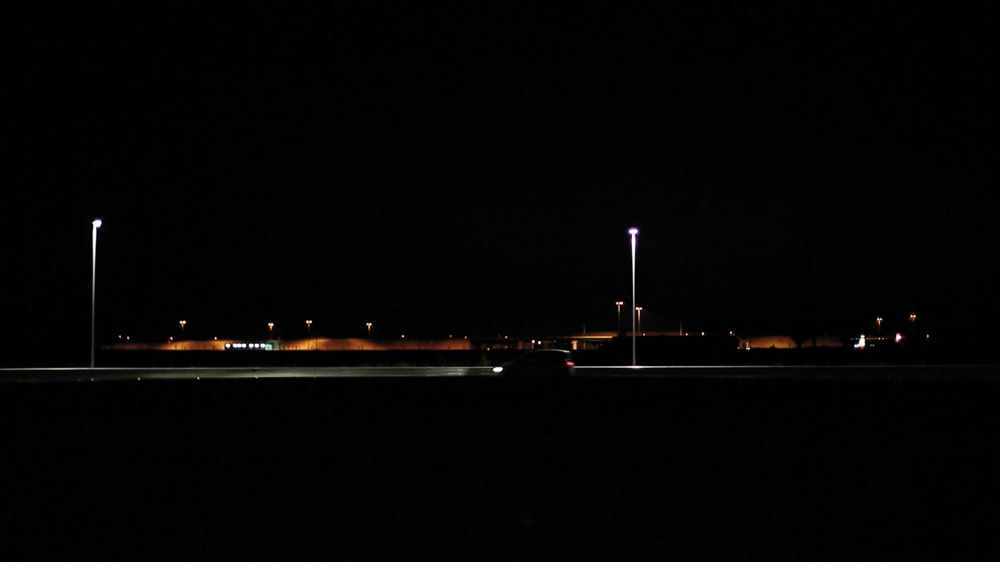
Michele Amaglio
Treviso Centrale
Doc. expérimental | hdv | couleur | 13:8 | Italie | 2014
The project Treviso Centrale stems from a desire to represent and interpret the territory of Treviso in the north-east of Italy. A territory that deals with the consequences of a heavy exploitation of the land for the sake of industrialization and economic wealth but also that deals with the relationship between the human presence and the man-altered landscape. In Treviso Centrale the subjects try to engage with this wounded landscape, non-places, with the attempt to re-appropriate them. This engagement becomes forced, unnatural, because of the impossibility to relate with places that have lost their social and inner function. Treviso Centrale becomes then a journey into these contrasts, into this everyday struggle between economic and social space.
Michele Amaglio (b.1993) is an Italian photographer based in Brighton (UK) currently studying at the University of Brighton, BA (Hons) Photography at his third year. From the early workshops with the Italian photographer Marco Zanta, Michele Amaglio grew an interest on architectural photography and urban landscape starting questioning the contrasts between past and presence within the landscape. His work is focused on the relationship between human being and space, between landscape and existentialism. Across different projects his attempt to represent the social space questions the alienation from the every-day life. Among the main influences of his work, Henri Lefebvre, Albert Camus and Jean Beaudrillard.


Alzakout Amel
Purple Sea
Documentaire | dcp | couleur | 67:0 | Allemagne | 2020
"Je vois tout", dit-elle, comme si c'était une malédiction. Soleil éclatant, ciel bleu sans nuages. La mer est calme, encadrée par un bout de balustrade. Des voix qui bourdonnent. Un moment paisible si ce n'est que la mer est debout, verticale, comme une cascade. Une ruée d'images, virevoltantes, sens dessus dessous, cahotantes. Des gens dans le bateau, dans l'eau, des cris, des gilets de sauvetage, des sifflets de détresse. Orange fluo, formes géométriques découpées par le soleil. Il n'y a plus d'horizon, ni de ciel, plus de haut ou de bas, seulement la profondeur et rien à quoi se raccrocher. Même les mouvements d'Eme s'arrêtent, se contractant dans le présent brutal. Elle filme et parle. À lui, à elle-même, à nous, peut-être. Des jambes flottant dans un pantalon de survêtement, des jeans, serrés les uns contre les autres. Un chemisier à motif papillons, on dirait que leurs ailes battent dans l'eau. La ceinture serpentine d'un manteau, un gobelet en plastique froissé, un paquet de cigarettes. Allez tous vous faire foutre! Elle parle, elle rage, et elle filme pour vaincre la fatigue, le froid, le fait que les secours n’arrivent pas. Pour ne pas mourir, pour qu'il reste simplement quelque chose.
Amel Alzakout est née en 1988 en Syrie et habite à Leipzig (Allemagne). Elle est artiste et réalisatrice. De 2010 à 2013, elle a étudié le journalisme à l'Université du Caire (Égypte). En 2017, elle a participé, avec d'autres artistes, à l'installation vidéo "Trust Us", dans le cadre du 3e Herbstsalon au Maxim Gorki Theater, Berlin (Allemagne). De 2017 à 2018, elle a étudié les arts à la Kunsthochschule Berlin-Weißensee, Berlin (Allemagne). Actuellement, elle étudie les arts médiatiques à la HGB – Hochschule für Grafik und Buchkunst, Leipzig (Allemagne). En 2018, elle a remporté, avec son coréalisateur Khaled Abdulwahed, le Film Prize for International Cooperation Germany/Arab World, de la Robert Bosch Stiftung, Stuttgart (Allemagne), pour son long métrage "Purple Sea", produit par pong film, Berlin (Allemagne). Il s’agit de sa première réalisation. Khaled Abdulwahed est né en 1975 en Syrie, et habite maintenant à Leipzig (Allemagne). Il est artiste, photographe et réalisateur. De 1996 à 2000, il a étudié les beaux-arts et le design graphique à la Adham Ismail Art School, Damas (Syrie), et à la Frederick University, Nicosie (Chypre). De 2002 à 2008, il a exposé ses œuvres d'art au Moyen-Orient et en Europe. De 2011 à 2013, il a dirigé et produit des œuvres d'art vidéo, qui ont été projetées dans de nombreux espaces artistiques, festivals, universités et chaînes de télévision du monde entier. En 2015, il a été invité dans la section Talents de la Berlinale, Berlin (Allemagne). En 2018, son court métrage "Backyard" a été présenté en première mondiale au FID Marseille (France), et y a remporté le Prix du CNAP - Centre national des arts plastiques.

Ulf Aminde, Anwar Al Atrash,Fadi Aljabour, Marwa Younes Almokbel, Aram Al Saed, Mira Debaja, Amel Alzakout, Mohamad Halbouni, Dyaa Naim, Ramin Parvin, Nour Nasred
TRUST US
Installation vidéo | hdv | couleur et n&b | 3:25 | Allemagne | 2017
TRUST US 2017, Video Installation Very often journalists are contacting us to write a story about `refugees` in the context of higher education, their living in Berlin, or simply because they`re looking for some “traumatized†characters for their stories. We usually reject these requests. But this time we received an award of a multinational company and it came with a sum that we urgently needed in order to continue our programme. This time they wanted to produce a video, a one shot sequence. They seemed nice, but their task was to produce emotional images featuring the bodies of the refugee students, underscored by the voice of the white professor contextualising their movements and giving meaning to the frames. We told them this is not how it`s going to work. No one wanted to provide their Ìbodies Ì to fill those frames of narration. They said: „TRUST US, it will look good“ Finally we agreed: THEY WOULD FILM US while WE WOULD FILM THEM. We decided to edit the material WE shot and combine it with texts spoken by us, relating to the week long discussions we`ve shared. The whole thing became an installation shown at 3. Herbstsalon, Maxim Gorki Theater.
The *foundationClass was established at weißensee academy of art berlin in 2016. Its aim is to provide equal access to formal art education for people who have fled or migrated to Germany. It tries to create a social space where everyone’s resources are acknowledged and validated and where new formats of skill sharing and knowledge transfer can be developed. Ultimately, the *foundationClass wants to question the norms, conventions, and the habitus of art institutions and the industry as a whole. Situated within the institution but rejecting to embody it, the *foundationClass scrutinizes the art academy as a powerful site of knowledge production. Refusing to be integrated into an economy of difference, we aim to formulate strategies that position us outside of the grid of representation. Together we want to find answers to the question of how an art school of the future would look like if it genuinely recognised migration as an essential societal factor. As a collective the *foundationClass contributed TRUST US as a multichannel video installation to the 3. Berliner Herbstsalon, a festival for contemporary art by the Maxim Gorki Theater.


Ulf Aminde
Welcome Home
Installation vidéo | dv | couleur | 12:0 | Allemagne, Belgique | 2006
Imaginez une seconde: vous faites des courses dans un magasin IKEA et tout à coup on vous propose de participer à un film. C'est ce qui est arrivé à plus d'une centaine de clients dans le magasin IKEA de Wilrijk en Belgique, où Ulf était en tournage pendant deux semaines pour réaliser Welcome Home. Dans des décors tout faits - la chambre d'étudiant, le salon rustique, l'intérieur design - les clients avaient la possibilité d'improviser comme ils le voulaient à partir de situations données. Ces acteurs en devenir ont tous fait preuve d'une grande volonté. On y voit des personnes qui dorment, qui cuisinent, qui sont assis... Welcome Home est une compilation de scènes humoristiques basées sur la confrontation entre ce qui est artificiel et authentique, et entre l'Homme et le commerce. IKEA sert de décor clairement reconnaissable pour ces scènes et fait apparaître toutes sortes d'associations et de réflexions. Cependant on ne trouve aucune prise de position explicite sur la consommation et la mondialisation de la part d'Ulf. Pour lui, ce qui est important c'est de laisser les gens jouer et de nous permettre les observer.
Ulf Aminde (né en 1969 en Allemagne) vit à Berlin et travaille comme artiste vidéo. Son travail a été présenté au Centre Culturel de Suisse (Paris), à Friedericianum (Kassel) et à Kagami (Paris), pour n'en citer que quelques uns. En 2004, une exposition intitulée Survival of the fittest lui a été consacrée à Wolfsburg, et en 2006, ses oeuvres ont été présentées à la Biennale de Berlin. Ulf s'intéresse principalement aux mécanismes socio-émotionnels de la société capitaliste. Il ne s'agit pas simplement d'images enregistrées. Au contraire il cherche à faire participer des gens victimes des stigmates sociaux, des personnes qui ne peuvent pas ou qui ne pourront jamais prendre part à l'Etat-providence. Ulf ne condamne personne et ne formule aucune plainte mais son travail montre ces personnes d'une telle manière que la perception que l'on a habituellement d'eux est brisée, ou du moins devient plus nuancée.


Tal Amiran
Untitled (band in a studio)
Art vidéo | dv | couleur | 2:23 | Royaume-Uni | 2006
A rock band is filmed in a studio during the making of a music video. The set for the video consists of numerous video cameras with their lights on, arranged in a circle. The circle of lights forms a ring and within that ring the band is situated. In the second scene, a performer comes in and out of the frame as he plays his guitar frenetically. The last scene shows the band waiting, looking bewildered. At the centre of the work is the uncertainty we feel in regard to what we see, as the footage documents a real activity which at the same time remains inexplicable. The video is silent. Sound and music are a central and inseparable part of a rock band?s performance, and as such, the muted sound instigates an uncanny experience and conveys a new reading to the scenes. The camera/observer is placed in a neutral standpoint, dictating a sense of detachment and alienation. The relationship between documentary and fiction, stillness and movement, euphoria and melancholy, and sound and silence, are at the core of this work.
Born Tel Aviv, Israel. Tal Amiran is both a video artist and a professional musician and is currently a member of signed punk rock London band Vatican DC. In 1989 he completed his Fine Art studies in Thelma Yellin school of Art in Tel Aviv, Israel, with a Certificate of Excellency. In 2006 he graduated from Chelsea College of Art and Design London, with a First Class Honours in BA Fine Art (New Media). Since graduating, Amiran`s video works have been shown extensively: The International Video Art Festival in Iceland, The 12th International Media Art Biennale in Poland, `The Bigger Picture` in Manchester UK, ?Future Map? ? University of the Arts? new talents showcase, amongst others. Amiran lives and works in London, UK
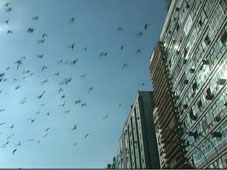

Cristina Amiran, Khalil Charif
AVENUE
Art vidéo | dv | couleur | 3:16 | Brésil | 2006
Durant le procédé d'enquête sur les relations entre le cinéma, la photographie et l'art vidéo, les auteurs on travaillé sur des thèmes locaux-globaux. Ils présentent dans cette vidéo un plan séquence d'une vue de Copacabana (vide de voitures et de personnes) comme un voyage planant sur une avenue.
Cristina AMIRAN was born in Rio de Janeiro in 1960, and lives and works there. She has a B.A. in Visual Communication (1988) and has studied art at the Escola de Artes Visuais do Parque Lage (2003-2005). Khalil CHARIF, also from Rio de Janeiro (1967), has an A.A degree in Art History (2004) and is a B.A. in Architecture (1995); and has attended EAV Parque Lage (2003-2005) as well. They have been working independently and in group projects. Their exhibitions include: "Lusovideografia", Oi Futuro, Rio de Janeiro, 2007. "VideoLab Coimbra 2006", TAGV / Universidade de Coimbra, Portugal, 2006. "Posição 2004", EAV Parque Lage, Rio de Janeiro, 2004.

Andrew Amorim
The Future Stands Still, But We Move In Infinite Space
Installation vidéo | 4k | couleur et n&b | 46:48 | Brésil, Ouganda | 2017
Shot on location in Kampala, Uganda, the film combines narratives connected to the symbolism surrounding the sport of boxing. From the very personal and intimate relationship between the artist and a boxer in a sparring match, to a story about the black heavyweight as a gallant and politicised figure in the historical match-up between Sonny Liston and Floyd Patterson. The film also diverts into several off-topic sequences; showing a group of stunt bikers during an euphoric highway performance, tracing history through a tree planted on October 9th 1962, the day Uganda gained independence from Britain, and visiting the former Gaddafi National Mosque. The Mosque was renamed to `The Uganda National Mosque` in 2013 after pressure from the new Libyan administration, following the US led intervention in Libya in 2011, and the death of Colonel Gaddafi. The title of the work originates from Rainer Maria Rilke's Letters to a Young Poet (1929). Rilke addresses existential themes, profoundly probing the quest for individuality, the significance of death, and reflection on the experience of time as death approaches. His work invoke images of mankind`s anxiety and alienation in the face of an increasingly scientific, industrial, reified world.
Andrew Amorim (b. 1983, Belém, Brazil) lives and works between Bergen, Norway and Kampala, Uganda. He graduated from the Bergen Academy of Arts and Design in 2016. Recent solo exhibitions include The Future Stands Still but We Move in Infinite Space at Bergen Kjøtt, Bergen (NO); Lest We Perish at Entrée x Independent Hq, Harlem, New York (US); Lest We Perish, K4 gallery, Oslo (NO); After Touch, Space 4235, Genova (ITA) and Material Light (with Numi Thorvarsson) at Bergen Kjøtt, Bergen (NO). His work has also been included in the exhibitions The Future Stands Still but We Move in Infinite Space, OSL contemporary, Oslo (NO); After the Exhibition, Hordaland Art Centre, Bergen (NO); The Young Lions, Preus Museum, Horten (NO); The National Juried Spring Exhibition, Melk, Oslo (NO); eõ, NoPlace, Oslo (NO) and I: project space in Beijing (CHN). Â
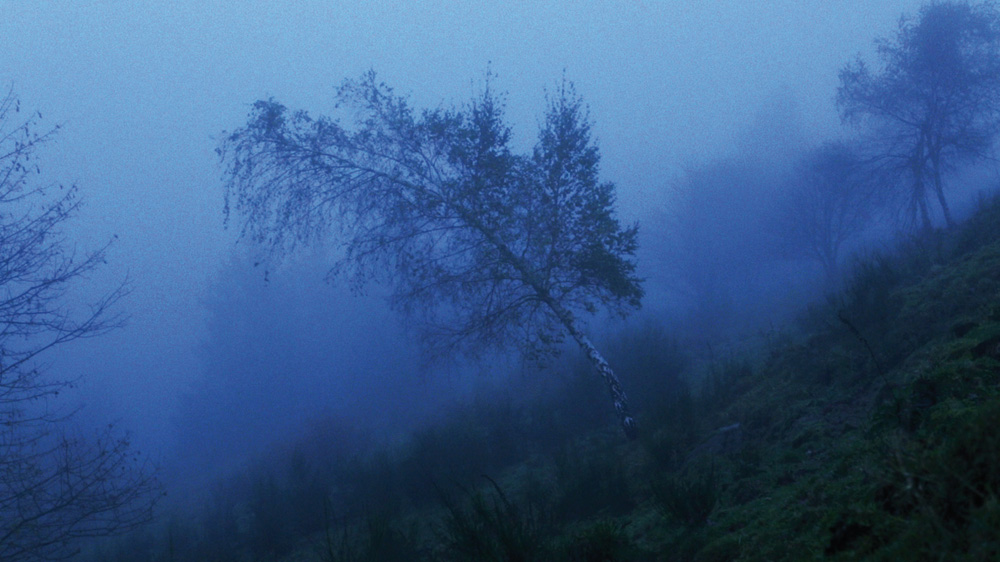
Annabelle Amoros
La Maison des Lilas
Fiction expérimentale | hdv | couleur | 17:32 | France | 2014
Pensée, filmée et montée comme un rêve, La Maison des Lilas propose une vision onirique et surréaliste, où logique, structure narrative et raison s`effacent pour libérer la pensée spontanée et l`inconscient.
Annabelle Amoros est née en 1987 en France. Après avoir étudié à l’école d’Art de Metz, elle a suivi des cours à l’Ecole Nationale Supérieure de la Photographie à Arles, de 2011 à 2014. Durant cette période, elle a reçu une subvention de la région Alsace, ce qui lui a permit d’aller aux Etats-Unis afin de réaliser un projet photographique et vidéographique. Ensuite, elle a suivi un programme d’échange erasmus à l’école Taik de Helsinki, où elle a reçu ses premiers cours de vidéo avec Hannu Karjalainen, et a monté sa permière pièce, "Welcome to My World". Suite à cette première expérience, l’image en mouvement est devenu son activité principale. En s’inspirant du cinéma, de la vidéo et de la photographie, elle tente d’effacer la limite entre la réalité et la fiction, en utilisant les lumières artificielles de la nuit, afin de transformer la rue en théâtre et les habitants en personnages. Après plusieurs semaines de tournage, elle réorganise ses plans puis créé un nouvel environnement, inspiré des œuvres de David Lynch, Alec Soth ou encore David Clearbout.

Annabelle Amoros
Welcome to My World
Vidéo | dv | couleur | 9:25 | France, USA | 2013
La vidéo Welcome to My World représente Woolstock un petit village, extrêmement isolé au centre des .États-Unis, dans l?Iowa. Comme dans beaucoup d?autres lieux de ce type, il ne se passe rien. Les habitants sont enfermés dans un quotidien calme, épuré, et serein, mais peut être aussi ennuyeux et répétitif. Les scènes sont tournées dans des paysages contemplatifs. Elles représentent des atmosphères nocturnes et crépusculaires, éclairées par la lumière incertaine des lampadaires et nous plongent dans un univers étrange, où nous attendons quelque chose que nous ignorons et qui nous échappe.
Annabelle Amoros est née en 1987 à Creil. Après avoir suivit une formation à l`École Supérieure d`art de Metz, elle poursuit aujourd`hui ses études à l`École Nationale Supérieure de la Photographie d`Arles. Suite à quelques voyages l`ayant menée au centre des États-Unis, en Finlande, en Laponie, sans oublier la France, elle ne cesse d`observer et de s`imprégner de la vie quotidienne des gens installés dans des petits villages très isolés. Elle tente de transformer les habitants en personnages et de créer des univers sous tension à partir d`un quotidien où il ne se passe presque rien. Par l`outil photographique ou vidéographie, elle ne cesse d`interroger ses images autour de la dualité réalité-fiction.
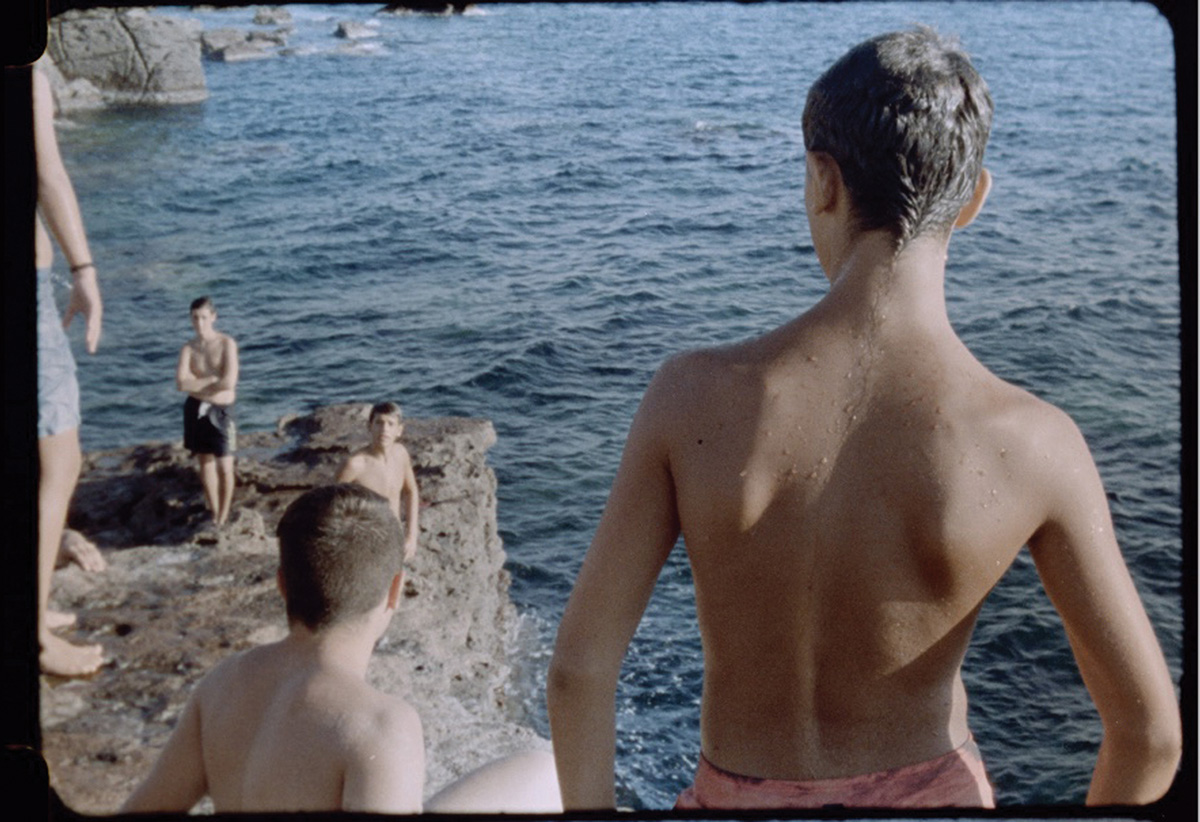

Marta Anatra
Progresso Renaissance
Doc. expérimental | 16mm | couleur | 20:0 | Italie | 2019
Portovesme, Sardaigne. Images d'un été passé. Les vagues de la mer s'écrasent sans cesse sur les rochers. Un groupe de garçons se rend à la plage à bicyclette, en passant devant des bâtiments industriels abandonnés qui annonçaient autrefois une nouvelle ère. Dans ce film cross-genre composé d'images d'archives et d'enregistrements 16 mm, le temps entre 1969 et le présent semble se confondre. Dans une région où le développement est au point mort, le groupe de garçons symbolise toute une génération.
Artiste visuelle, éditrice et réalisatrice, j'ai suivi une formation de peintre à l'Accademia di Belle Arti de Florence. Je vis et travaille à Marseille où j'ai suivi un master en film documentaire à l'université d'Aix-Marseille. J'ai également suivi une formation au Grenada Visual Centre à Manchester et à l'ISRE à Nuoro avec David et Judith McDougall. Le collectif Film Flamme-Polygone Etoilé et le Laboratoire L'Argent, dont je suis cofondatrice, ont joué un rôle déterminant dans mon travail en pellicule. Mes films indépendants ont été projetés dans des festivals internationaux tels que la Berlinale, le NYCIFF, le Festival des Peuples, Film Femmes Méditerranée, le SIEFF et l'ISREAL.


Thom Andersen
Get Out of the Car
Doc. expérimental | 16mm | couleur | 34:0 | USA | 2010
From the director of "Los Angeles Plays Itself" comes another city symphony exploring Los Angeles' gentrification through a thoughtful montage of façades and a playful excursus through its musical history.


Thom Andersen
Reconversao
Documentaire | hdv | couleur | 67:0 | USA, Portugal | 2012
?Reconversão? portrays 17 buildings and projects by Portuguese architect Eduardo Souto Moura, accompanied usually by his own writings. It is a search for his architecture, without critical commentary. Only the tour guide at Braga Stadium offers generalizations, which fit that work well enough, but it may be the exception, not the rule. Souto Moura has the last word: ?If there is nothing there, I invent a preexistence.? Technically, ?Reconversão? combines the crudeness of proto-cinema with the hyperrealism of digital cinema, bringing us back to the ideals of Dziga Vertov. Shooting only one or two frames per second and animating the images, in the manner of Muybridge, produces greater resolution, although not necessarily a greater sense of reality, and brings attention to the movements of water and vegetation that generally pass unnoticed.
Thom Andersen has lived in Los Angeles for most of his life. In 1974 he completed ?Eadweard Muybridge, Zoopraxographer?, an hour-long documentation of Muybridge?s photographic work. In 1995, with Noel Burch, he completed ?Red Hollywood?, a videotape about the filmwork created by the victims of the Hollywood Blacklist. In 2003 he complested ?Los Angeles Plays Itself?, a video essay about the representation of Los Angeles in movies. In 2010, he also directed ?Get Out of the Car?, about the visual archeology of the city. He has taught film composition at the California Institute of the Arts since 1987.
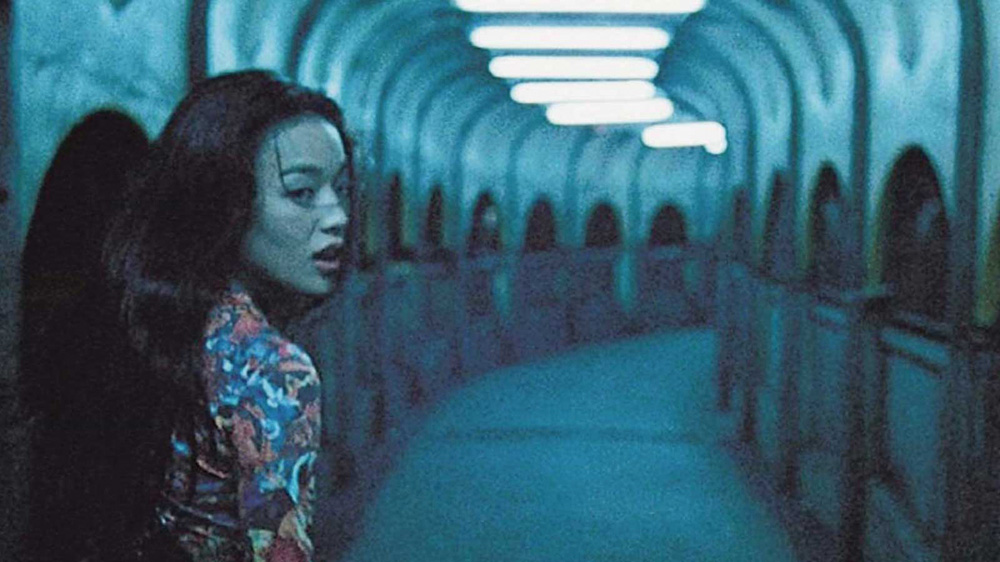
Thom Andersen
The Thoughts That Once We Had
Doc. expérimental | hdv | couleur et n&b | 108:0 | USA | 2015
Inspiré de la théorie du cinéma de Gilles Deleuze, «The Thoughts That Once We Had» se construit autour de l’amour et du pouvoir de séduction des films. Réduisant à zéro l’abstraction lyrique, ruminant sur les nazis, les communistes et les espions, comparant les danses de serpent orientalistes de Maria Montez et de Debra Paget, le film est un cadeau pour tous ceux qui voient dans le cinéma un art, une forme de pensée et une source de plaisir.
Figure incontournable du film expérimental américain, Thom Andersen commence à réaliser des films au milieu des années 1960 à Los Angeles, où il étudie le cinéma (University of Southern California). Au même moment, il développe une pratique d’écriture qui accompagnera toujours sa production. En tant que critique il sera un des premiers à s’intéresser à l’oeuvre filmique d’Andy Warhol. Si ses premiers films relèvent de la production «expérimentale» ou «d’avant-garde» (cf. «Melting», 1965 ou «Short Line/Long Line», 1966-67), à partir de la moitié des années 1970 il développe une forme hybride à la croisée de l’étude visuelle et du film documentaire. Avec «Eadweard Muybridge, Zoopraxographer» (1974) – issu d’un article qu’Andersen avait publié dans Film Culture en 1966 – le cinéaste s’intéresse à la figure de Muybridge et à ses expériences dans l’étude du mouvement. À la fois biographie de l’auteur et étude sur la nature même de l’image en mouvement, Eadweard Muybridge explore la possibilité pour le documentaire de s’ouvrir au champ de la critique et de travailler ainsi, par le biais du commentaire, une forme d’écriture particulière. Avec «Red Hollywood» (1996), co-réalisé avec Noël Burch, Thom Andersen dévéloppe également une série des textes sur les communistes à Hollywood, en faisant ainsi du film une sorte de traité historiographique critique. «Los Angeles Plays Itself» (2003), son opus majeur, porte à l’extrême ce principe. Constitué à partir d’un nombre étonnant de séquences des films, le long-métrage explore, sur une durée de trois heures, les multiples identités de la ville de Los Angeles, et ce que le cinéma peut nous apprendre sur l’espace urbain.La production filmique de Thom Andersen se présente comme un lieu d’investigation idéal pour comprendre les liens entre l’écriture et la mise en forme visuelle de la pensée.

Thom Andersen
The Tony Longo Trilogy
Vidéo | hdv | couleur | 14:1 | USA | 2014
"While remastering Los Angles Plays Itself, I re-edited a number of clips, including The Takeover (Troy Cook, 1995), a grungy, sordid straight-to-video film remarkable only because executive producer Michael Woods and star David Amos had in 1990 planned and carried out the murder of Horace McKenna, Woods's partner in the operation of a chain of strip clubs around Los Angeles - a crime echoed in the movie. After repeated viewings, I noticed a miniature tragedy (or black comedy) spread out over the first sixty minutes. Its protagonist is Waldo the bouncer, the victim of ruses and sucker punches, whose multiple failures lead him to one final heroic attempt to make amends. This is his story."
Thom Andersen has lived in Los Angeles for most of his life. In the 1960s, he made short films, including Melting (1965), Olivia’s Place (1966), and --- ------- (1967, with Malcolm Brodwick). In 1974 he completed Eadweard Muybridge, Zoopraxographer, an hour-long documentary film about Muybridge’s photographic work: It was restored by the UCLA Film and Television Archive in 2013. In 1995, with Noël Burch, he completed Red Hollywood, a critical video essay about the film works created by the victims of the Hollywood Blacklist. Their work on the history of the Blacklist also produced a book, Les Communistes de Hollywood: Autre chose que des martyrs, published in 1994. In 2003 he completed Los Angeles Plays Itself, a three hour-long movie about the representation of Los Angeles in movies. It was voted the Best Documentary of 2003 in the Village Voice Film Critics’ Poll. He completed Get Out of the Car, a short 16mm portrait of Los Angeles. In 2012, he directed Reconversão, an HD video about the work of Portuguese architect Eduard Souto Moura, the winner of Pritzker Prize in 2011. He has taught at the California Institute of the Arts since 1987.
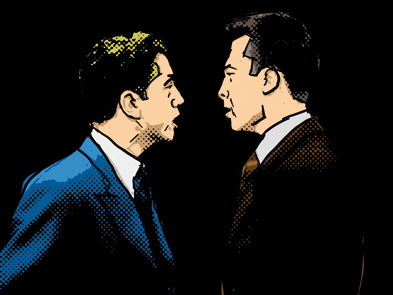
J Tobias Anderson
A Hand That Speaks
Vidéo | hdv | couleur | 1:9 | Suède | 2011
"Take a look at these hands. Take a look at these hands. The hand speaks."
J Tobias Anderson was born in 1971 and grew up on Gotland in the Baltic Sea. His education includes the University Collage of Arts Crafts & Design as well as the Royal Collage of Art, both in Stockholm. He lives in Nacka just outside of Stockholm. Working mainly with video and animation Anderson has moved between narrative and non-narrative works and through the years he has created almost 40 films. He has also been experimenting with different forms of music and sound installations. Notable exhibitions include P.S.1 Contemporary Art Center in New York, Kunst-Werke Berlin, CaixaForum in Barcelona and Museo de Colecciones ICO in Madrid, as well as solo exhibitions at MMC Luka in Pula Croatia, ak28 in Stockholm and Uppsala Art Museum in Uppsala, Sweden. He is collaborating with Filmform Foundation in Stockholm, Espaivisor in Valencia, Spain and Factory-Art in Berlin.
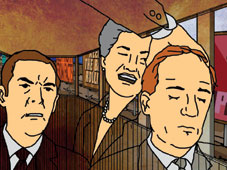

J Tobias Anderson
A Small Part of the World
Animation | dv | couleur | 2:53 | Suède | 2006
"A Small Part of the World" est une vidéo dans laquelle fourmillent citations et slogans. Lesquels faut-il croire, lesquels non? Dans un monde surpeuplé, comment sommes-nous censés trouver la voie à suivre pour vivre nos vies en harmonie? Ne buvez pas les paroles des dirigeants religieux ou politiques et ne vous laissez pas détourner de ce que vous jugez bon dans la vie. "Seek truth from facts" (la vérité se trouve dans les faits): tel est le slogan du parti communiste chinois. Ce pourrait être une idée à suivre, mais quelles sont les 'bonnes vérités'? Quel est votre chemin dans la vie?
J. Tobias Anderson, né en 1971 à Gothenburg (Suède), vit et travaille à Stockholm (Suède). Il a étudié le design et l'artisanat (section art) à l'University College of Arts de Stockholm, de 1993 à 1998. Il a ensuite passé un an au Royal College of Art de Stockholm (section vidéo). En tant que vidéaste, il s'intéresse principalement à l'animation et à ce qu'on appelle l'"Aproppriation Art". Il fait un travail d'expérimentation, en utilisant des techniques diverses et variées : vidéo, peinture, illustration, éléments sonores et musique. Cependant, l'essentiel de ses créations sont des vidéos -il en a produit une trentaine entre 1997 et 2006. Il choisit des supports générallement assez connus comme point de départ de ses explorations, qui sont à la base de la création de ses oeuvres. Ses vidéos abordent souvent des thèmes et questions d'ordre cinématographique, et sont le résultat d'expérimentations visuelles voire audiovisuelles. Son travail a été présenté en de nombreuses occasions, lors d'expositions et de festivals à travers le monde. Plusieurs vidéos représentent son travail dans différentes institutions d'art, dont le Musée moderne de Stockholm.

J Tobias Anderson
Allt blir självklart, genomlyst
Animation | hdv | couleur | 2:30 | Suède | 2015
In a colorful setting, where thoughts and ideas aren’t necessarily black or white, a situation of non-communication is enacted. Two men and a woman are throwing their most inner thoughts at each other, but finding little solace in the others’ words. Communication can sometimes be unidirectional, even though a dialogue is taking place, and where certainty can be a comfort, perhaps skepticism and doubt should be the default.
Born in 1971. Grew up on Gotland in the Baltic Sea. Education includes the University Collage of Arts Crafts & Design as well as the Royal Collage of Art, both in Stockholm. Lives in Nacka just outside of Stockholm. Working mainly with video and animation and moving between narrative and non-narrative works. Has created around 40 films. Also experimenting with different forms of music and sound installations. Notable exhibitions include P.S.1 Contemporary Art Center in New York, Kunst-Werke Berlin, CaixaForum in Barcelona and Museo de Colecciones ICO in Madrid, as well as solo exhibitions at MMC Luka in Pula Croatia, ak28 in Stockholm and Uppsala Art Museum in Sweden.